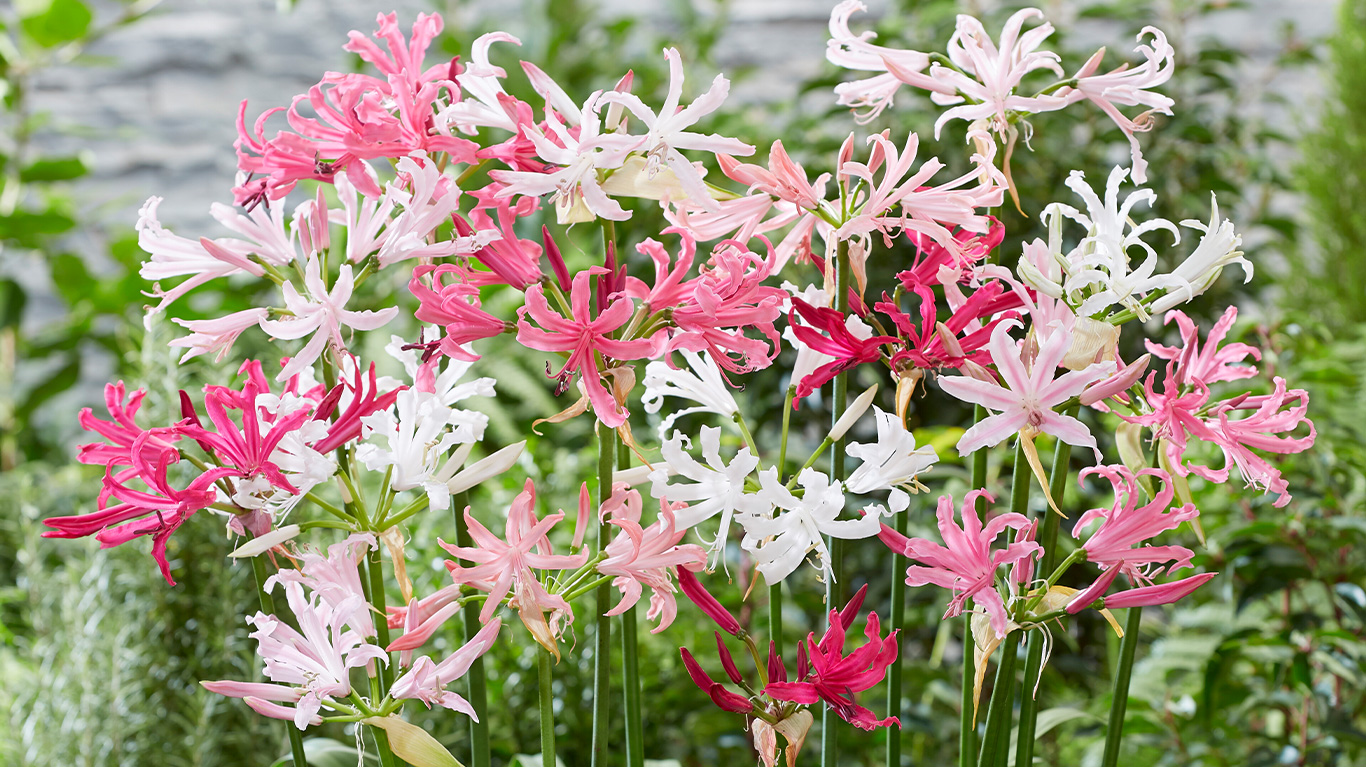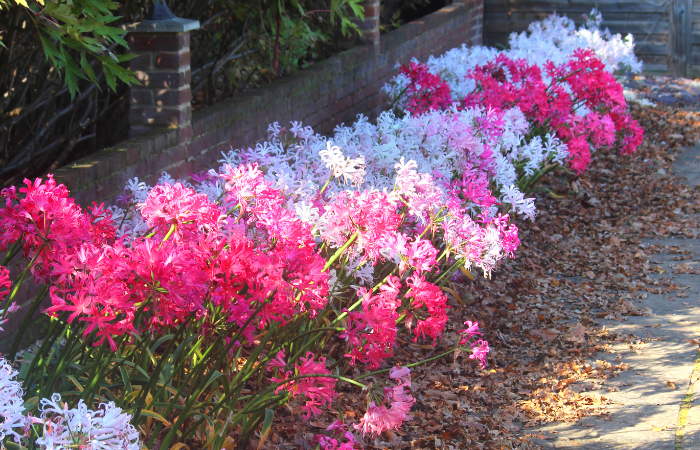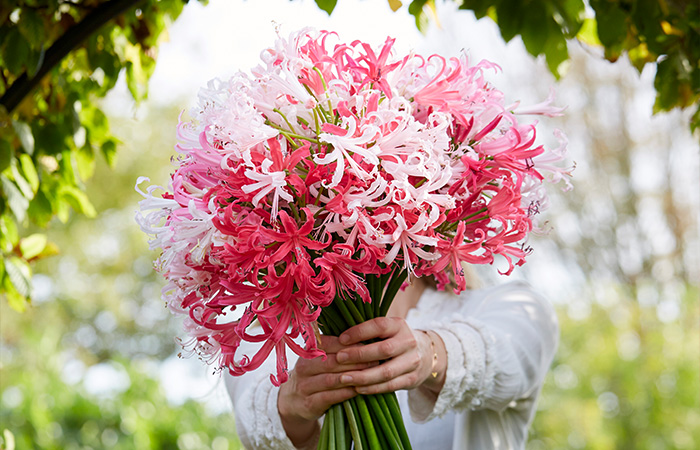
How Supplied
Our bulbs will be delivered fresh and healthy. There should be firm, not soft. Some bulbs may arrive with slight mould patches, but this is completely normal and can be brushed off. If you suspect that your bulbs are faulty, do not hesitate to get in touch.
Once your bulbs arrive, take them out of their packaging (including bags) and lay them out on newspaper so they can breathe. This is so they don’t excessively sweat in their containers, ruining the bulbs. Leave somewhere cool and dry until it’s time to plant them.
What we've Included
When to Plant | Where to Plant | How to Plant | When will they flower | After Care |
Common Issues | Inspiration
When to Plant
Our Nerine bulbs will be delivered fresh and healthy.
They should be firm, not soft. Some may arrive with slight mould patches, but this is completely normal and can be brushed off. If you suspect that your bulbs are faulty, do not hesitate to get in touch. For the best results, plant your bulbs in mid to late spring (April-June) as this gives them time to appear in the summer with bouts of beautiful blooms!
Where to Plant
Nerines originate from South Africa, making them a sucker for sunlight. They prefer full sun conditions, so make sure they’re planted somewhere that gets plenty of rays throughout the day. Ensure their soil is also well-drained and grown somewhere that’s sheltered from strong winds. Can be planted in any bed, border, or even container if it can get plenty of sun.
If you worry about a lack of sunlight exposure in your garden, flowerpots can be incredibly helpful. Simply move them to wherever the sun is positioned!

How to Plant
Borders
1. Dig a hole that’s wide enough to fit the bulb/corm comfortably, allowing the bulb to sit just below the surface of the soil.
2. Add bonemeal and horticultural grit (or spent compost) to the bottom of the hole. This will help them to grow healthily and allow the soil to drain freely.
3. Pop each bulb/corm into their holes, pointed side up. Space them twice their width apart (around 7-10cm).
4. Cover with soil and pat down.
Containers
1. Fill the pot with any multi-purpose compost until you’ve reached just past its halfway point.
2. Nerine bulbs should be planted about 5cm from the top of the pot.
3. Place your bulbs on top of the soil, about 7-10cm apart.
4. Cover with the compost to the top of the pot, leaving the bulbs just below the soil level. Break up any lumps as you go.
5. Gently press the soil so that it’s nice and flat.
6. Make sure you place your pot on feet to allow the moisture from the pot to escape.
Watch our Video: 'How to Plant Nerines' here

When will they Flower?
Nerines are summer-flowering blooms, appearing from mid-Summer and lasting till early autumn! Nerine bowdenii varieties can be seen from August to October, providing a gorgeous display for months on end.
After Care
When to water
Water your Nerines at least once a week, or if the soil feels dry to touch on top and a few centimetres below soil level. This is a clear tell that they need a good drink.
What to do once they have finished blooming
As your nerines start to die back in Autumn, cut off spent flowers as they droop. You can store Nerine bulbs indoors over winter, but as Nerine bowdenii varieties are quite hardy, you can leave them in place if you cover them with thick mulch in autumn.
Storing tips
Lifting Nerine bulbs will protect them from harsh winter conditions. Here’s how and where to store them until the following planting season.
1. Wait until the plant has died down and has reached a straw colour (often brown).
2. Cut down the plant to the bottom of the stem and dig up the tuber gently. Shake off any remaining soil.
3. Keep them in a cool (frost free), dark, dry place, preferably in a dry box or container. If it gets particularly cold, you can cover them with garden fleece or layers of newspaper.
4. From March to April, start the potting on process once again before popping them outside.
Deadheading
Deadhead spent flowers when needed to keep the display looking clean and tidy. This will also encourage the plant to produce new buds! To do so, simply cut the spent flower with clean shears, just above the leaves.
Common Issues and How to Solve Them
Nerines are often unbothered by common issues but can come victim to slug attacks in the early autumn. You can fix this by adding a sharp grit to the base of the plant, as it will help to stop the slugs from reaching them easily.
Ready to Shop?
Find some inspiration for your garden
